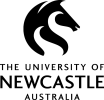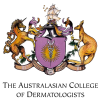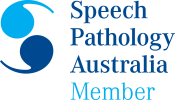By Ashleigh Elkins
There are many different tests that can be used to help confirm the diagnosis of a thyroid problem. Based on taking a history and performing a physical examination, if your doctor suspects you have a problem with your thyroid gland, he or she will most likely order one or more tests to help confirm or rule out the diagnosis of a thyroid disorder.
Common tests include blood tests to check the thyroid function, fine needle aspiration biopsy to evaluate lumps and nodules, and scans to obtain imaging of the thyroid gland.
Thyroid Function Tests
Thyroid function tests are a very common investigation performed when a thyroid problem is suspected. Thyroid function tests require a blood test. They are also used to monitor the effectiveness of treatment. Thyroid function tests assess the levels of thyroid stimulating hormone (TSH) and the two thyroid hormones – thyroxine (T4) and v (T3). These tests can be used to determine if the thyroid has a normal level of activity (euthyroid), if the thyroid is underactive (hypothyroid) or if the thyroid is over-active (hyperthyroid). The table below shows the results for the different states of thyroid activity:
| Thyroid State | TSH | Free T4 | Free T3 |
| Euthyroid | Normal | Normal | Normal |
| Hyperthyroid | Decreased | Increased | Increased |
| Hypothyroid | Increased | Decreased | Decreased |
Due to Medicare restrictions in Australia, TSH needs to be tested alone first. If the TSH is found to be abnormal, then levels of thyroid hormone can be tested. This restriction does not apply to people who have already been diagnosed with a thyroid problem.
Thyroid Autoantibodies
Thyroid autoantibodies are another type of blood test that can be ordered in the investigation of thyroid problems. This test is used to rule in or rule out an autoimmune disease as the cause of thyroid problems. There are three main autoantibodies that can be tested for:
- Thyroid peroxidase antibodies (TPO); these are antibodies towards thyroid peroxidase, an enzyme that is needed in the process of producing T3 and T4. TPO antibodies are positive in most patients with Hashimoto’s thyroiditis and in most patients with Graves’ disease. TPO antibodies may also be elevated in patients with other autoimmune diseases, such as rheumatoid arthritis.
- Thyroglobulin antibodies; these antibodies are markers of autoimmune thyroid diseases. They are positive in almost all patients with Hashimoto’s thyroiditis and are positive in most people with Graves’ disease
- TSH receptor autoantibodies; these are antibodies that bind to the TSH receptor and cause it to activate. TSH receptor autoantibodies are positive in the majority of people with Graves’ disease.
Other Thyroid Blood Tests
There are a few other blood tests that may be ordered to investigate suspected thyroid disease. Calcitonin is a hormone made by the C cells of the thyroid and is released when levels of blood calcium are high. Calcitonin levels may be ordered in the investigation of people with thyroid nodules or suspected medullary thyroid cancer. Blood levels of calcitonin may be elevated in medullary thyroid cancer, and may be used in monitoring following treatment for medullary thyroid cancer. In addition, another blood test called carcinoembryonic antigen, or CEA, is also used in addition to calcitonin for monitoring and follow up after treatment of medullary thyroid cancer. CEA is also used for monitoring following treatment of other types of tumours, such as colorectal cancers.
Fine Needle Aspiration Biopsy
Fine needle aspiration biopsy is most commonly used in the investigation of thyroid nodules. The procedure involves inserting a needle into the nodule in order to remove a sample of cells which can then be analysed under a microscope to assist in diagnosis. There are usually several samples taken from different parts of the nodule to ensure that the samples that are taken are representative of the cells and tissues within the nodule. This test helps to determine whether or not the nodule requires surgical removal or further monitoring.
Fine needle aspiration can also be used to help evaluate thyroid cysts. This involves inserting a needle into the cyst and draining the fluid within the cyst. The fluid that is collected can be evaluated in the lab to see if there are any suspicious changes.
Fine needle aspiration biopsy is used to guide the treatment and management of patients with thyroid nodules. Thyroid fine needle aspiration cytology results are classified according to the Bethesda classification system which is a six-category system used to guide management of thyroid nodules.
The six categories of this system are:
- Unsatisfactory sample/Non-diagnostic
- Benign
- Atypia of undetermined significance
- Follicular neoplasm/suspicious for follicular neoplasm
- Suspicious for malignancy
- Malignant
Fine needle aspiration cytology cannot help to differentiate between benign and malignant follicular neoplasms. Ultrasound guidance can be used to visualise the nodule when performing the fine needle biopsy to make sure that the samples are being taken from within the nodule and not the surrounding thyroid tissue.
Nodules that are removed surgically undergo histopathological analysis to provide a definitive diagnosis.
Thyroid Imaging
Thyroid Ultrasound
Ultrasound is a safe, accurate, non-invasive, inexpensive and readily available imaging modality that can be used to assess the thyroid gland. Ultrasound is usually the first type of imaging ordered for the investigation of thyroid problems. Ultrasound uses sound waves transmitted through a hand-held transducer probe. A gel is placed over the neck which helps to transmit the ultrasound waves from the probe. There is no radiation used in an ultrasound. Thyroid ultrasounds are particularly useful for imaging thyroid cysts, nodules, goitre (enlargement of the thyroid gland) and suspected tumours. Ultrasounds can also be used to assess the blood flow in the thyroid. Ultrasound can also be used to guide fine needle aspiration biopsy of nodules or growths in the thyroid.
There are several ultrasound features which suggest that a thyroid nodule is likely to be benign. These include:
- Sharp, well-defined borders around the entire nodule
- Fluid within the nodule is indicative of the nodule being a cyst
- Numerous nodules throughout the thyroid; this generally indicates a benign multinodular goitre
- Minimal or no blood flow through the nodule indicates that the nodule is likely to be a cyst
Thyroid Scan/Thyroid Isotope Scans
An isotope scan of the thyroid is used to determine thyroid function because the scan measures how much of a substance similar to iodine is taken up by the gland. The thyroid uses iodine to produce thyroid hormones, so the thyroid normally absorbs iodine. For the scan, technetium (Tc- 99m) pertechnetate is injected. This is a substance that behaves similarly to iodine. Radioactive iodine has been used in the past, but technetium pertechnetate is now preferred because there is less radiation exposure and it is more cost-effective than radioactive iodine. After about 20 minutes, a scan is performed to identify the pattern of uptake in the thyroid.
This type of thyroid scan is particularly useful in helping to determine if the thyroid is over-active, such as in conditions like Graves’ disease, subacute thyroiditis and toxic multinodular goitre. All three conditions have different patterns of uptake:
Graves’ disease
- Diffuse increased uptake
Subacute Thyroiditis
- Low iodine uptake
Toxic Multinodular Goitre
- Patchy uptake; areas of increased uptake and areas of decreased uptake
Thyroid isotope scans are helpful in the investigation of thyroid nodules. Thyroid nodules are generally classified as cold, warm or hot. A cold nodule does not take up any pertechnetate and is non-functioning, a warm nodule is functioning normally, and a hot nodule takes up more pertechnetate than the surrounding thyroid tissue and is said to be hyper-functioning. Isotope scans are particularly helpful for investigating patients with low levels of TSH. If a patient has low TSH and the isotope scan identifies a hot nodule, it is likely that the nodule is benign. Overall, the majority of thyroid nodules scanned are cold nodules, approximately 80%. However, only about 20% of cold nodules are found to be malignant after further investigation.
Thyroid CT Scan
Computed tomography, or CT scans can also be used to investigate suspected thyroid pathologies. It is not as good as ultrasound for identifying pathology within the thyroid gland itself, but CT is useful for investigating lymph nodes in the neck, chest and thyroid region. It is also used in the investigation of goitre to determine if the goitre has extended behind the sternum and into the mediastinum (retrosternal extension). CT may also be used if thyroid cancer is suspected to see if the tumour has spread to other surrounding organs. CT scans use x-rays to create cross-sectional images of the thyroid and surrounding structures. In some cases, a contrast medium may be injected to help define anatomical structures more clearly. A limitation of CT scans is that there is radiation exposure associated with the scan, unlike MRI and ultrasound.
Thyroid MRI Scan
Another type of investigation which may be ordered to investigate problems with the thyroid is a magnetic resonance imaging (or MRI) scan. Just like a CT scan, MRI is also not as good as ultrasound for detecting pathology within the thyroid gland itself. MRI scans might be ordered to assess surrounding lymph nodes and other neck and chest structures. It is useful to help determine if a suspected thyroid cancer has spread to surrounding organs. MRI can also be used to evaluate retrosternal goitre extension. MRI is also helpful to determine the size and shape of the thyroid. MRI may be recommended instead of a CT scan because there is no radiation exposure associated with an MRI, and an MRI scan of the thyroid does not usually require the administration of a contrast medium. CT and MRI are similar in terms of evaluating lymph nodes and spread to the surrounding tissues.
The post Diagnostic Tests for the Thyroid Gland appeared first on Thyroid Clinic Sydney.










